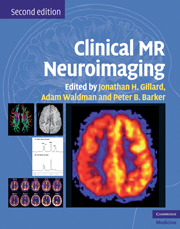Preface to the second edition
In the 5 years since ‘Clinical MR Neuroimaging: Diffusion, Perfusion and Spectroscopy’ was published, physiological and functional neuro magnetic resonance (MR) techniques have continued to evolve. In addition to the increased use of diffusion (DWI) MRI, perfusion (PWI) MRI, and MR spectroscopy (MRS) in clinical practice, there has also been increased attention to techniques such as functional MRI (fMRI), permeability- and susceptibility-weighted (SWI) imaging. The second edition of ‘Clinical MR Neuroimaging’ has therefore been updated to reflect not only the latest developments in DWI, PWI and MRS, but also to include fMRI, permeability imaging, and SWI. The subtitle has been changed from ‘Diffusion, Perfusion and Spectroscopy’ to ‘Physiological and Functional Techniques’ to reflect this broadening of the subject material.
As in the earlier edition, the first section of the book describes the physical principles underlying each of these techniques, including potential associated artifacts and pitfalls. The second section addresses applications in different branches of clinical neuroscience. Chapters are grouped according to pathology, and are preceded by overviews that aim to place these methodologies in a broader clinical perspective. Further illustrative case studies have been added, including the ‘new’ as well as the ‘old’ techniques. Whereas SWI (e.g., for the exquisitely sensitive detection of hemorrhage or venous deoxygenation) and fMRI (for pre-surgical brain mapping) are clearly entering the clinical arena, other advanced methods (such as volumetric MRI, or magnetization transfer imaging) remain primarily in the research realm, and hence are not covered here.




